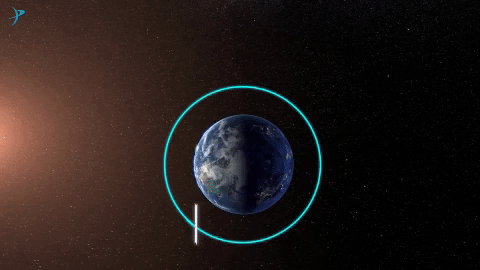
LightSail a pair of doesn’t have solar-powered engines, or use alternative energy or heat for a few secondary purpose; it'll virtually be propelled by the physical force of photons touch its Brobdingnagian shiny sail. Not solar radiation, mind you — that’s a special factor altogether.
It’s a thought, explained Planetary Society CEO and acknowledged Science Guy Bill Nye aforesaid in an exceedingly press decision earlier than the launch, that goes back centuries.
“It very goes back to the 1600s,” he said; Kepler deduced that a force from the sun should cause estraterrestrial body tails and alternative effects, and “he speculated that brave folks would one day sail the void.”
So they might, as more recent astronomers and engineers have pondered the possibility more seriously.
“I was introduced to this in the 1970s, in the disco era. I was in Carl Sagan’s physics class… wow, 42 years ago, and he talked about solar sailing,” Nye recalled. “I joined the Planetary Society once it absolutely was shaped in 1980, and we’ve been talking about solar sails around here ever since then. It’s very a romantic notion that has tremendous sensible applications; there ar simply many missions that star sails ar completely ideal for.”
Those would primarily be long-term, medium-orbit missions where a craft needs to stay in an Earth-like orbit, but still get a little distance away from the home planet — or, in the future, long-distance missions where slow and steady acceleration from the sun or a laser would be more practical than another propulsion method.
Mission profile
The keen-sighted among you'll have noticed the “2” within the name of the mission. LightSail 2 is indeed the second of its type; the first launched in 2015, but was not planned to be anything more than a test deployment that would burn up after a week or so.
That mission had some hiccups, with the sail not deploying to its full extent and a pc flaw compromising communications with the craft. It was not meant to fly via star sailing, and did not.
“We sent the CubeSat up, we checked out the radio, the communications, the overall electronics, and we deployed the sail and we got a picture of that deployed sail in space,” said COO Jennifer Vaughn. “That was strictly a preparation test; no star sailing befell.”
But it paved the means for its successor, which can try this fantastical style of transportation. Other craft have done thus, most notably JAXA’s IKAROS mission to Venus, that was quite an bit larger — although as LightSail 2’s creators observed, not nearly as efficient as their craft — and had a really totally different mission.
The latest ballistic capsule, loaded into a 3U CubeSat enclosure — that’s concerning the dimensions of a loaf of bread — is piggybacking on associate Air Force payload mounting to an altitude of about 720 kilometers. There it'll detach and float freely for every week to urge off from the remainder of the payloads being discharged.
Once it’s safely on its own, it'll fireplace out from its carrier craft and start to unroll the sail. From that loaf-sized package can emerge associate expanse of reflective Mylar with a locality of thirty two sq. meters — concerning the dimensions of a ring.
The thrust created, the team explained, is incredibly little — as you may expect. Photons don't have any mass, however they are doing (somehow) have momentum. Not a lot, to be sure, but it’s greater than zero, and that’s what counts.
“In terms of the quantity of force that star pressure goes to exert on North American country, it’s on the micronewton level,” said LightSail project manager Dave Spencer. “It’s terribly small compared to chemical propulsion, terribly little even compared to electrical propulsion. But the key for star sailing is that it’s forever there.”
“I have several numbers that i really like,” cut in Nye, and detailed one of them: “It’s nine micronewtons per square meter. So if you've got thirty two sq. meters you get around 100 micronewtons. It doesn’t sound like a lot of, however as Dave points out, it’s continuous. Once a rocket stops, once it runs out of fuel, it’s done. But a star sail gets a n"art-11">Wait…” (He then argued with himself {about whether or not it might expertise night — it'll, as you see within the image below.)
Written By:
D.r Hasnain Ashfaq Khan
Published By:
TechZone






No comments:
Post a Comment